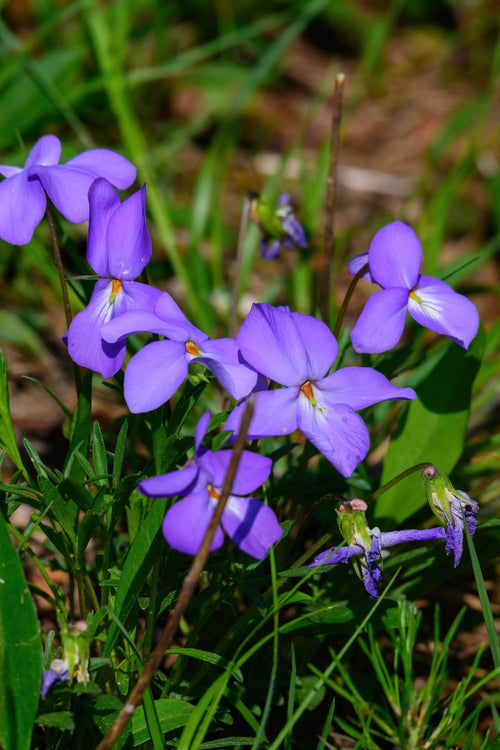Preparing Bareroot Perennials For Planting
When planting bareroot perennials, preparation is critical to ensuring their successful growth and development. Before diving into the planting process, gathering all the necessary materials and selecting an appropriate planting site is essential. Start by examining the bareroot plants upon arrival or purchase. Inspect the roots, ensuring they are healthy and free from any signs of damage or disease. Additionally, take note of the condition of the stems and foliage, looking for any abnormalities or discoloration.

Once you have determined the health of your plants, it's essential to prepare the planting site to ensure that your plants will thrive. First, choosing a location that receives adequate sunlight and has well-draining soil is necessary. Bare-root perennials, in particular, need soil rich in organic matter and a pH level that suits their specific needs.
To guarantee that your plants grow and flourish in optimal conditions, evaluating the soil's nutrient levels and checking whether it is too acidic or alkaline is essential. Conducting a soil test is an effective way to determine whether any soil amendments are required to optimize soil fertility and pH levels. This test will help you assess the soil's nutrient levels and identify any deficiencies, excesses, or imbalances in nutrients that are essential for plant growth. Based on the results, you can add necessary amendments to adjust the pH level and improve soil fertility, ensuring the ideal conditions for your plants' growth and health. Conducting a soil test is crucial to creating a healthy and thriving garden.
You should take some necessary preparatory steps to give your bareroot perennials the best chance at thriving after planting. First, it's essential to hydrate the roots of the plants by thoroughly watering them before planting. This will help ensure they are ready to transition into the soil and start growing. While the plants are soaking, you can begin drilling the planting holes. It's essential to ensure that the holes are both broad and deep enough to accommodate the root system without causing overcrowding or bending of the roots. Additionally, you should loosen the soil at the bottom of each hole to promote healthy root growth and allow the roots to access the nutrients they need to flourish. By taking these steps, you can help your bareroot perennials establish themselves and grow strong and healthy over time.

Planting Bareroot Perennials
With the preparation complete, it's time to plant the bareroot perennials. Gently remove the plants from their packaging or storage carefully so as not to disturb the roots excessively. If the roots appear dry, soak them in water for a few hours before planting to rehydrate them and promote vigor.
Place each bareroot perennial into its designated planting hole at the appropriate depth so the crown sits just above the soil surface. Spread the roots evenly, ensuring they are not cramped or tangled within the hole. Backfill the crater with dirt, gently setting it around the roots to eliminate any air pockets and provide stability to the plant.
As you plant each bareroot perennial, maintain good spacing between plants to permit adequate airflow and stop overcrowding as they mature. Consider the mature size of each plant species and arrange them accordingly to optimize their growth and visual appeal within the landscape.
Caring for Newly Planted Bareroot Perennials
After planting, it's crucial to provide proper care to help the bareroot perennials establish themselves in their new environment. Water the newly planted perennials thoroughly after planting to fix the soil around the roots and promote initial root growth. Monitor soil moisture levels regularly, especially during dry weather, and water as needed to keep the soil consistently moist but not waterlogged.
When planting bareroot perennials, it's essential to take steps to ensure their long-term health and survival. One of the best ways to do this is by applying a layer of organic mulch around the base of each plant. This simple step can significantly impact the health and vitality of your perennials.
Organic mulch provides many benefits to plants, including helping to conserve soil moisture, regulating soil temperature, and preventing weed growth. By creating a barrier between the soil and the air, mulch helps maintain a consistent moisture level in the soil, which is especially important for bareroot plants that are vulnerable to drying out.

However, applying the mulch correctly is essential to avoid causing more harm than good. Mulch should be spread in a thin layer around the base of each plant but not directly against the stems or crowns. This can cause moisture-related problems and attract pests and diseases, harming the plants.
After planting the bareroot perennials, it is crucial to be observant and closely monitor them for any signs of stress or transplant shock in the following weeks. Look out for wilted, discolored, or deformed foliage, yellowing or browning of leaves, or stunted or lackluster growth, as these may indicate underlying issues that require attention. Taking immediate action and supporting the plants showing such symptoms is essential. For instance, staking taller plants can offer the necessary support, while a balanced fertilizer can promote vigorous growth and development. Being attentive and taking prompt and effective measures can ensure your garden thrives with lush and healthy perennials.
As the bareroot perennials begin to establish themselves and show signs of new growth, providing them with the proper care and maintenance is essential to ensure their long-term health and vitality. To keep them healthy, prune away any dead or damaged foliage hindering their growth, as this will encourage the plant to put its energy into new, healthy development. Regular weeding is also essential, as it helps relieve the competition for nutrients and moisture, allowing the plants to thrive. Watch for pests or diseases, which can quickly spread and cause significant plant damage. Promptly addressing any issues will help prevent the spread of pests and diseases and minimize plant damage. By giving your bareroot perennials the care and attention they need, you'll be rewarded with healthy, vibrant plants that will continue to thrive for years.


















































